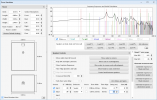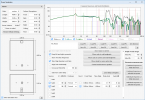Keith_W
Major Contributor
In another thread, @ernestcarl posted a video with an interview with Trinnov's Jon Herron. Most of the discussion was about Trinnov's "waveforming" technology - for me it was a fantastic video and I recommend watching the whole thing. However, this slide was of particular interest and I would like to see what ASR members thought of it.

For some reason ASR won't let me embed the video, so here is a link: Link to video (timestamped 33:49)
The traditional approach of "flooding the room" includes strategies by MSO and Harman, where multiple subwoofers are used to even out the bass response. I am not sure, but I think that Room Shaper (@mitchco review here) also uses the same approach. "Control the zone" refers to Trinnov's new DSP, and although it is not mentioned - probably also Dirac ART and VBA's (he does mention DBA's though). This approach is wasteful of subwoofer power because half the output goes into cancelling reflections. There is also bass equalization which he does not mention, where you simply lop off the peaks. And of course room treatment is the last option in my poll. My understanding is that it is intrusive and less effective.
Jon Herron says that Trinnov's approach minimizes standing waves in the room, reduces the "cacophony of reflections" that obscure bass detail, whilst also minimizing seat to seat variations in bass. Of course, he works for Trinnov and he may be biased. So I was wondering whether this was a true discussion of the pros and cons of different approaches to bass management.
I have been working on my own VBA. Although it works, it is no better than bass equalization. I have measured in multiple positions in the room, and differences are quite minor. There is no difference in the spectrogram in terms of bass decay time. Part of me wonders whether this was because my VBA was poorly designed, and whether I could get a better result by refining it. But the lazy part of me says that the result with bass equalization is already satisfactory, and I should just call it a day.
So: what approach do you use, and what are the pros and cons of each approach?
For some reason ASR won't let me embed the video, so here is a link: Link to video (timestamped 33:49)
The traditional approach of "flooding the room" includes strategies by MSO and Harman, where multiple subwoofers are used to even out the bass response. I am not sure, but I think that Room Shaper (@mitchco review here) also uses the same approach. "Control the zone" refers to Trinnov's new DSP, and although it is not mentioned - probably also Dirac ART and VBA's (he does mention DBA's though). This approach is wasteful of subwoofer power because half the output goes into cancelling reflections. There is also bass equalization which he does not mention, where you simply lop off the peaks. And of course room treatment is the last option in my poll. My understanding is that it is intrusive and less effective.
Jon Herron says that Trinnov's approach minimizes standing waves in the room, reduces the "cacophony of reflections" that obscure bass detail, whilst also minimizing seat to seat variations in bass. Of course, he works for Trinnov and he may be biased. So I was wondering whether this was a true discussion of the pros and cons of different approaches to bass management.
I have been working on my own VBA. Although it works, it is no better than bass equalization. I have measured in multiple positions in the room, and differences are quite minor. There is no difference in the spectrogram in terms of bass decay time. Part of me wonders whether this was because my VBA was poorly designed, and whether I could get a better result by refining it. But the lazy part of me says that the result with bass equalization is already satisfactory, and I should just call it a day.
So: what approach do you use, and what are the pros and cons of each approach?









